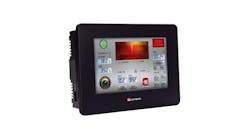Often, in the midst of the latest project or design, we come across things that will make a difference to our work, but we only give it a glancing look. I have many such events in my rather busy schedule and find myself, later, in a moment of tranquility, trying to think back to all of those innovative ideas or products that came across my bow in the heat of the battle. Other times, we are forced to react to an unexpected downtime and are left in the aftermath wondering what the heck the vendor was thinking when it designed its product.
As a designer of control systems, I tend to establish a stable of products that I have success with and use them pretty much exclusively. This serves to cut down on design time but unfortunately can sometimes lead to missing the boat on innovation. While I am busy designing controls, developing programs and supporting my maintenance teams, hardware vendors are out there coming up with new ways to catch my attention. With my head down in the latest challenge, the next big thing might be flying right past me, while I totally miss it. I like to think that I am forward-thinking, but sometimes I find myself only fully embracing a new technology when an even newer technology emerges on the market. Such is the case with the Industrial Internet of Things (IIoT).
Dive into distributed I/O
I have worked with distributed I/O systems forever, but only in the past year or so have I done things to fully utilize the tools lying dormant in such systems. In this case, it isn’t the physical connections as much as the software advantages lurking within those systems. For instance, a remote I/O rack has input and output cards in them that connect to machine-level devices. In a simple control system, one brings the I/O to a convenient merge point on the machine and then, using one of the many communication protocols out there, brings those points back to the image table of a PLC.
Newer systems utilize unique mapping techniques—some would call them add-on profiles—to take those raw input and output registers for each module and present them in a user-friendly format in the tag database of the main processor. My journey usually ends there. As a programmer, I would then point my ladder code to the appropriately named input or output tag member representing the real-world wired connection and, ta-da, I have a program and control.
Associated with the input and output table or module-defined tag structure are a number of other bits and bytes that provide a wealth of other information that is rarely used to its full potential. For example, the relatively simple task of building a graphical representation of the actual hardware in your PLC programming software also automatically sets up communications and, with it, command and status words that contain information that can be used to monitor your system and provide additional information about performance of the modules, the communications to said modules and other items that make your system smarter for the user. While the programmer must then extract that data using logical code and then provide screens where the information can be displayed, it certainly would give the operator or maintenance technician a better chance of drilling down to the source of an issue with a control system.
I have only started to utilize these key status elements to my advantage in my control design, and then along comes the IIoT to take it to a new level. With the marrying of information technology (IT) and operational technology (OT), the IIoT takes this process of checking the underlying relationship between the sensor or valve, OT, and the processor or supervisory system, IT, to a point where it can be accessed, processed and displayed on devices in the hands of the manager or supervisor or other upper-management personnel. I have only begun to understand how this tool might make my company more competitive, and I am eager to learn more in the coming months.
Ahh, a good electrician
My main focus on the design of electrical controls is somewhat eased by the fact that I have a very good industrial electrician that makes me look good at what I do. While some designers might have to spend hours working out the details of panel space, layouts and the position of components within a panel, I have the luxury of producing a set of drawings and then having my good friend and co-worker turn my concept into reality. Acknowledging early on that my friend was much better at building panels than I could ever hope to be, one thing that I have committed myself to doing is making sure that he gets to see all the new stuff coming down the pike from the hardware vendors as it relates to his job. I may not understand it all, but, if I can make sure that I have a good relationship with my automation vendors, then I can parade them in front of my electrician extraordinaire, and he can separate the wheat from the chaff and embrace the products that make the most sense for us.
Innovations in cable
One such discovery came from a recent visit by a company that prides itself on smart cable management. We first hosted a visit from them as a favor to my main automation distributor. He likes to understand our process and anticipate our needs. Without realizing it, apparently we could use some smart cable management. Our electrical department hired several members away from a local electrical installation company about 20 years ago, and, with this group of fine individuals, we have become very adept at using all sorts of cable glands and panel penetrations to bring the various controls cables back to the main control panel. However, what we failed to do is put our heads up long enough to realize that some of the best innovations in the industry over the past 20 years have been in the methods and techniques used to bring cables into and out of a control enclosure.
Over the past two or so years, we have changed much of the way we handle cables from the field to the enclosure by making use of products from this fine company. We have adapters that allow pre-molded cables to pass through a circular punched hole without having to remove the casing on the cable. We have convenient ways to pass multiple cables of different diameters through a single-cable penetration that can even be reconfigured later by changing out inserts for individual cable entries within the bulkhead connection. We recently started using an bulkhead adapter that starts with a rectangular cable flange and then turns 90° within the mating bulkhead to have all the cables hang down naturally to relieve stress on the cable.
The latest visit from this particular vendor showed us a product we might not use in our facility but is worth mentioning because of its innovation. The product is a fire-prevention seal for cable entry systems. The product is designed for the railroad industry, but I can see its use in other industries, as well. The core of the product is the intumescent foaming fire penetration seals (IFPS). These seals significantly increase their volume in the presence of high temperatures, effectively sealing off the panel penetration from the passage of air. As we all know, fire needs to breath and taking away the source of oxygen can prevent the spread of the fire. These systems can be used for cable entry points in normal control systems and meet the E45 and EI30 classifications.
Technically disposable
My last story for this month has to do with innovation that might not have been as well-thought-out. The trend these days is put bigger power into a smaller package. While this works great for the consumer or end user, sometimes this is a deterrent to efficient maintenance of such devices. One downside of the current trend to downsize electrical packages is that they are pretty much becoming a disposable commodity. The serviceable points on some programmable logic controllers (PLCs) or programmable automation controllers (PACs) have pretty much disappeared. If something goes wrong inside, one must replace it in its entirety and either toss the remains out or send them back for a repair at the manufacturer. Either way, one is out the cost of the controller at the outset and can then hope to pay half the cost of a new one if they choose to send the damaged one in for repair.
I ran into such a scenario a couple of months ago. We had a major retooling a couple of years ago to fully automate three high-speed packaging lines. Each of these lines has an automated dumping system for bulk pasta. The processor in each of those bulk handling systems is a recently added member of a well-established line of PACs from a major manufacturer here in North America. Unlike all of the other family members, this particular processor provides power to the onboard I/O via a pair of terminals on the processor housing itself. Internally, this power routes through a fuse that is soldered to a daughter-board that is then soldered to the motherboard of the CPU.
The solution to my problem was to buy a new processor. There are no user-serviceable parts on this processor. The implied stance is to toss it out and get a new one. I don’t know about the rest of you, but spending more than $1,000 on a component that will be thrown out because a short in a sensor popped a fuse isn’t the result I envisioned for embracing new technology.
The bottom line is there is always going to be innovation. As designers, we will always be tasked with deciding which innovation to embrace and which innovation to hold at arm’s length until it is thoroughly thought out. Either way, the future is coming, and we can either jump on for the ride or sit back in an armchair and watch others go where we will only wish to go later.






